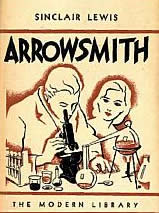| |
Studying the nature of T4 resistance |
 |
Charles Darwin and Alfred Wallace noted that evolution is the natural outcome of genetic variation and differential reproduction due to environmental selection. For bacteria, phage represent a major environmental challenge - a "life or death" selection pressure. In fact the use of phage as an anti-bacterial agent has a long history, and forms the focus of Sinclair Lewis' novel Arrowsmith. |
In 1943, Luria & Delbrück used the selection pressure of α phage infection to study the origins of genetic variation. Their experiment was based on the observation that variants of E. coli resistant to lysis by α phage often appeared in infected cultures. Is the same thing true for T4 phage? |
To determine whether variants of E. coli, resistant to T4 infection, exist. Take 8 overnight cultures of E. coli ~107 cells/ml). At time "0" add 106 phage and incubate with aeration at 37°C for 72 hours. Note what happens |
|
It is likely, but by no means certain that after the initial dramatic drop in absorbance, some of your cultures became cloudy again! Our next step is to determine whether resistance to T4 phage
|
There are many types of coliphage, that is viruses that can infect E. coli. We will use the T-odd phage T1 to test the specificity fo T4-resistance. T1 phage is distinct from, and unrelated to T4 phage. To analyze as homogenous a population of cells as possible, we will isolate a single clone of T4 resistant E. coli from each culture. These are our "T4R" strains. |
We will grow up an overnight culture of each T4 phage-resistant strain; label the cultures T4R-1, T4R-2, T4R-3, etc. Also, grow up an overnight culture of wild type E. coli. Divide each resistant culture into two; take 2 ml of the original culture and add 3ml of fresh LB and set up a similarly diluted culture of wild type E. coli. Also set up a diluted culture of the wild type strain. |
For each of your TR strains (you could have as many as 7!), examine whether they are lysed by the end of a 45 min. incubation period (carried out at 37°C) and record your observations. |
|
|
Phage recognize their targets through interaction with molecules on the bacterial cell surface. The initial recognition event involves the tail fibers. If the phage finds the "right" type of bacteria, interactions with baseplate lead to irreversible binding. Binding of the base plate leads to the injection of the phage's genomic material (a linear double-stranded DNA) into the bacterial cell. |
| An obvious way for a bacterium to escape infection is to alter its surface, so phage no longer attach. |
In the 16th century, Galileo Galilei conducted experiments that suggested that the speed at which an object falls is independent of its mass. This relationship, however, is strictly true only in a vacuum. In a medium that offers resistance, such as air or water, the rate at which an object falls also depends upon its size and shape. For bacteria and phage, the difference in sizes is dramatic. Centrifugation assays exploit size and density differences between biological objects. In this case, we use the difference is size between bacteria and phage. |
A typical E. coli is a cylinder ~1.5 µm in diameter and 2-4 µm in length (~1 to 2 cubic µm in volume); it is denser than the medium in which it grows. Phage are even denser than bacteria but very much smaller. A T4 virion is ~0.25 µm long and 0.05 µm in diameter. Bacteria are heavy enough to settle out of solution under the force of gravity, although it can take a few hours. |
Phage are so small that the thermal motion of water molecules is sufficient to overcome the force of gravity. Much like a feather floats on the wind, phage remain suspended in solution. A solution of phage is a colloid - solid particles suspended in a liquid. The speed at which bacteria "fall" can be increased by increasing the effective gravitational force -- which is exactly what a centrifuge does. If T4 phage bind to the surface of a bacterium, a short centrifugation will remove both bacteria and phage from solution. If the phage do not bind to the bacteria, such a centrifugation will "pellet" the bacteria, but leave the phage in the supernatant. We will use a standard plaque assay (with wild type E. coli) to determine whether or not phage have been left in solution or removed. To test whether our T4-resistant E. coli can still bind T4 phage, we will use a centrifugation assay. Prepare overnight cultures of wild type and T4R E. coli strains and then add ~105 phage to 1 ml of bacterial culture. |
Wait 5 minutes for binding to be complete and then centrifuge the solution at 10,000g for 3 minutes. Take the top 0.5 ml of supernatant, to avoid disturbing the pellet and determine the titer (concentration) of the phage remaining in solution. |
|
Use Wikipedia |
revised
20-Apr-2006
|